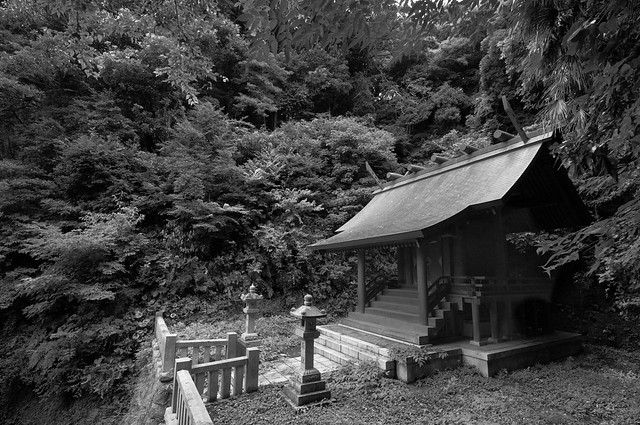Friday, August 26, 2011
[jules' pics] Downtown Kamakura
Even though Amanawa, the oldest* Shinto** shrine in Kamakura, is located in one of the busiest parts of town, it doesn't get many visitors. Don't know why. Because entry is free?
*8th Century, although of course none of the buildings are that age - I suppose, in UK parlance, one would say that there has probably been a shrine on this site since the 8th Century....
**It looks very Zen to me - just show what I know...
P.S. May be better viewed here on my blog, where (as pointed out by a commenter) the same picture appears to have a relaxing sepia tone rather than the bluish cast apparent on the Empty Blog. An interesting illusion - both copies are actually identical with only grey tones.
--
Posted By jules to jules' pics at 8/26/2011 11:18:00 AM
Subscribe to:
Post Comments (Atom)

7 comments:
I think those roof bits sticking out might be quite Shinto?
Cool, you guys have your own shrine
I vote shinto. Doesn't look classic zen to me.
In any case, obviously rebuilt in what I'll call Takagawa shogunate style: didn't look like that in the 8th century...
Zen:
http://en.wikipedia.org/wiki/File:GinkakujiTemple.jpg
Muromachi period (and district of Kyoto)
This pix does not begin to do justice the the serenity of the gardens, even during the early August festival in Kyoto.
Possibly more than one wants to know about
Amanawa Jinja Shrine
http://www.asahi-net.or.jp/~qm9t-kndu/amanawa.htm
That site is one we have used a lot as a reference for Kamakura temples; in fact it's probably how we originally found out about this little one.
David:
It is a lot less clear than just Zen or Shinto. Buddhism is pretty flexible, and tends to adopt elements of the local religion. In Kamakura, some places have oscillated between the two and many are now a mixture. The usual sign of modern Shinto is bright red gates, and brightly coloured monsters. Zen Buddhism in Kamakura is more typically green gardens, grey buildings and statues of Buddhas. The two characters of Japan. Sometimes you'll find an obviously Shinto shrine in the middle of a clearly Zen Buddhist temple. So the point I was making was that this early Shinto shrine has none of the typical Shinto styling, but appears to have remained Shinto.
Post a Comment